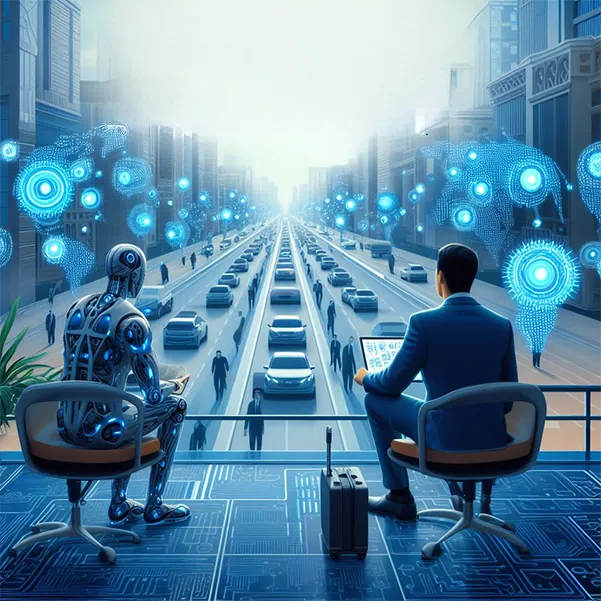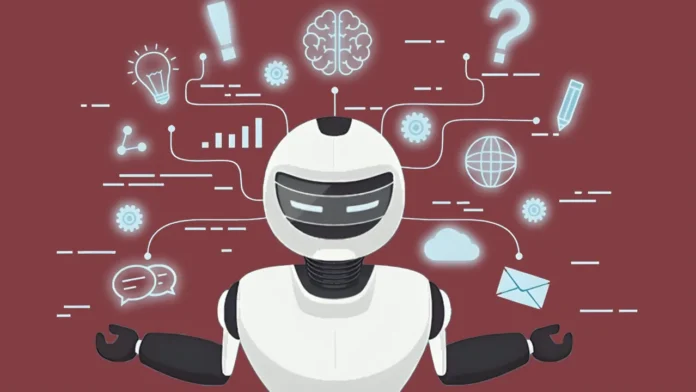Introduction
Artificial intelligence (AI) has revolutionized numerous industries by significantly impacting employment opportunities. With advanced computer systems capable of performing complex tasks that once required human cognition and intelligence, AI”s impact on employment is evident in today”s applications such as chatbots, self-driving vehicles, predictive analysis, face identification, resume evaluation, targeted marketing, and more. The widespread use of AI has broadened the scope of job opportunities across various fields, enabling organizations to streamline operations and optimize productivity.
As emerging nations strive to digitize their economy, embracing AI has the potential to stimulate unparalleled levels of efficiency and economic expansion.
According to PWC, AI has the potential to add up to $15.7 trillion to the global economy by 2030, which is higher than the combined output of China and India.
Nevertheless, several specialists caution that AI and automation could also result in the displacement of employment in developing nations, where inexpensive labor has played a crucial role in the economy. This requires immediate policy development on the retraining of the workforce and the restructuring of employment.

This article delves into the promises and perils of AI for the future of work in developing countries. How will adopting AI and automation technologies impact job creation and displacement in these countries? What policy interventions would be needed to maximize and minimize the former? The analysis draws upon the latest research on global AI’s Impact on Employment trends and examples of early adoption impacts visible in developing country contexts.
The Economic Promise of AI
Many specialists concur that AI has great potential to stimulate AI economic growth and development in countries by utilizing its productivity advantages across many sectors. An estimate by Accenture suggests that developing countries may potentially boost their economic production by more than 20 percent by 2035 if they start investing in AI preparedness. Here are some instances of how AI-driven automation and augmentation can enhance productivity and innovation across industries:
Production and farming

Industrial AI comprises a spectrum of technologies like predictive maintenance, inventory optimization, defects detection, robotic process automation, precision agriculture, and many more – all helping manufacture higher quality items at cheaper costs. Computer vision is enabling real-time flaw identification in manufacturing, enhancing yields. Electricity expenses in industrial operations have been cut by 10-25 percent utilising AI-based predictive maintenance. Crop yields have grown by almost 50 percent in developing nations like India after employing AI for targeted fertilizer and water applications.
Service Sectors
In the services sector – be it banking, retail, healthcare, or government services – AI is helping improve the speed, efficiency, and accuracy of deliverables. Chatbots now resolve 30-70 percent of customer queries in seconds, freeing up human agents for complex complaints. Robotic process automation is helping banks improve turnaround time on applications by 20-40 percent. Algorithmic lending models are enabling faster and fairer credit appraisals using alternate data. All this leads to higher customer satisfaction at lower costs.
New Business Models
By tapping into the exponential power of data and algorithms, AI is also enabling innovative new business models. For example, AI-generated user risk profiles allow pay-as-you-go motor insurance models to expand coverage. Algorithmic credit scoring has made micro-lending viable by reducing costs and defaults. Automated harvesting and grading technology has created online marketplace models for directly connecting farmers to buyers. Thus, AI can catalyze inclusive development.
Economic Growth
Given such great potential for boosting innovation and productivity growth, emerging countries must catch up in AI preparedness. The World Economic Forum forecasts that AI adoption might contribute an additional $16 trillion to global GDP by 2030. Developing countries hoping to boost their manufacturing and agriculture exports or establish world-class service sectors would need comprehensive national AI policies to build skills and drive quick adoption.
AI and Job Displacement Risks

However, along with efficiency and higher economic output, AI’s Impact on Employment and automation also poses the risk of human jobs being displaced in developing countries. A 2018 World Bank study estimated that 57 percent of jobs in OECD countries were at high risk of significant automation, mainly routine and physical employment. Developing countries may have more protection currently due to massive wage gap advantages and economic growth momentum. But automation incentives, as well as the cost of AI tech, are expected to keep rising.
A McKinsey study estimates that 400-800 million jobs could be automated globally by 2030. However, job losses are likely higher in developed countries and China due to aging demographics and higher wages. But for developing countries, an ILO study projects even the most optimistic scenario could mean tens of millions of jobs lost in the coming decade, mainly affecting unskilled workers. Here are some occupation categories likely to be impacted:
Routine Manual Jobs
Construction equipment operators, farm workers, and factory workers engaged in routine physical tasks face a high probability of being replaced by machines as the capabilities of robotic automation keep improving. Most at risk are jobs requiring less flexibility, social intelligence, or creativity.
Routine Cognitive Jobs
Basic data entry jobs, accounting clerks, assembly line inspectors, and such white-collar roles focused on predefined rule-based tasks are primed to be automated through software like robotic process automation and AI. Fewer humans would be needed in standardized processing tasks.
Manufacturing and Services
Even as automation drives manufacturing productivity, the overall job intensity of factories may keep declining. Similarly, in services, front-office jobs like cashiers, bank tellers, travel agents, and such are at risk from conversational AI and automated kiosks. Emerging economies relying on such jobs for the adsorption of low-skilled labor may see churn soon.
The good news is most studies don’t forecast net job losses but rather a massive transformation in the employment landscape in the AI age towards new kinds of human-machine collaboration. The challenge for policymakers lies in ensuring a smooth transition for workforces, minimizing skill gaps, and propagation effects across interconnected sectors. Investing in reskilling and upskilling must start now before automation incentives accelerate further.
Opportunities for AI-Driven Job Creation

While specific categories of jobs face risks from automation, experts also predict several new types of jobs emerging across domains driven by booming demand for AI talent and services worldwide. If developing countries can quickly reskill workers, they will have unprecedented opportunities to build world-class AI and IT ecosystems catering to global shortages, just like India did for software services in the 90s.
Here are some examples of specialized AI talent needs coming up across sectors:
AI Researchers and Engineers
To keep innovating better self-learning algorithms, academic researchers and software engineers skilled in machine-learning methods will be in huge demand. Tech giants and startups competing to attract rare AI talent may offer record pay packages globally.
ML Ops Engineering
After models are built, enormous talent will be needed to improve and maintain AI systems seamlessly across the production pipeline – from data collection, verification, model integration, and monitoring to compliance and ethics issue redressal.
Domain Expertise
With AI entering complex fields like healthcare, law, engineering, and finance, domain experts who can contextualize data collection and model training will also have highly valued roles. Every industry will need people who understand AI and the sector deeply.
Platform Engineering
Enterprise AI capabilities rest on complex tech platforms built by specialized architects – integrating data flows and model pipelines with legacy software systems and apps. Companies would need such talent to embed AI successfully into business processes.
Policy and Ethics
Fairness, transparency, and accountability matter more as AI enters sensitive domains like recruitment, insurance, credit allocation, and law. Companies deploying algorithms that impact people’s lives directly would need advisers to assess risks and align with regulations. Developers working on unbiased data collection and model training also fall into this category.
New Collar Jobs
Finally, while some jobs get eliminated in the AI age, many traditional service jobs will also end up being transformed by integrating with machines. So, for instance, agriculture may use less labor due to automated harvesting but see new-age farmer analysts who leverage predictive analytics. Auto garages would employ fewer mechanics but more electronics repair experts for sensor systems. Aspiring youth in developing countries can gear up through vocational training programs for new collar middle-skills AI jobs – neither purely manual nor heavily tech-oriented.
Conclusion
In summary, while AI’s Impact on Employment and automation bring dangers of job losses in specific occupational categories, they also open up prospects for huge employment growth in developing fields linked with the AI-driven global economy. For developing countries, their wage advantages, economic growth momentum, and youth demography give windows of opportunity to plan and equip workforces for this AI age.
With visionary, robust leadership and persistent investments in infrastructure, research, and talent development, emerging nations can strive to become consumers of AI technology produced elsewhere and lead innovation in contextual AI applications for their own markets and others similar to them. Technologies like frugal innovation, inclusive finance, precision agriculture, and low-resource machine learning give potential to establish world-class capabilities and global famous.
Rather than opposing automation, politicians should strategize how to optimise employment growth directly and indirectly generated by AI adoption locally. Smooth labor transfer programs and the promotion of AI entrepreneurship ecosystems along with social security nets would be crucial accompaniments. If governments can walk this balancing tightrope properly, the AI age offers a brighter and more inclusive future of employment possibilities for emerging countries than earlier digital revolutions.



